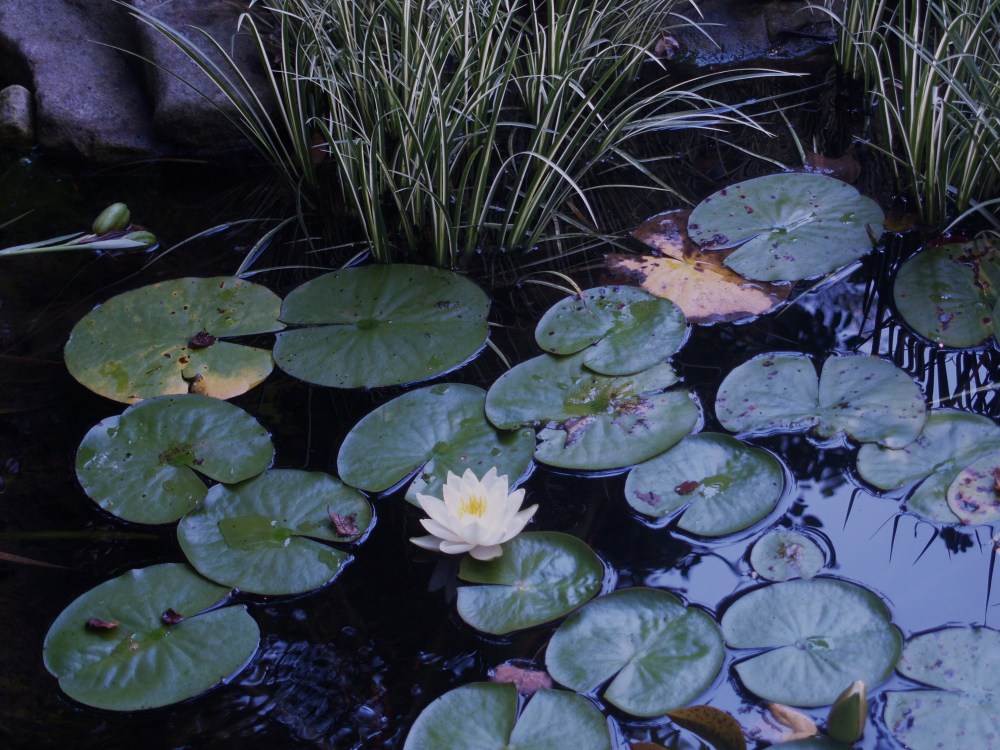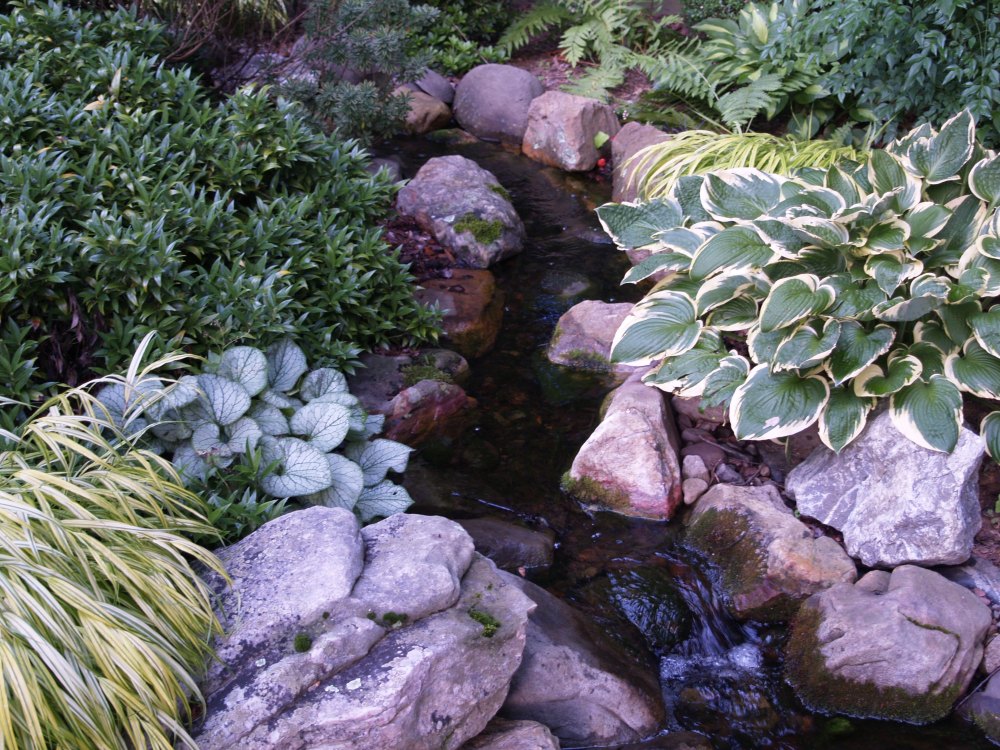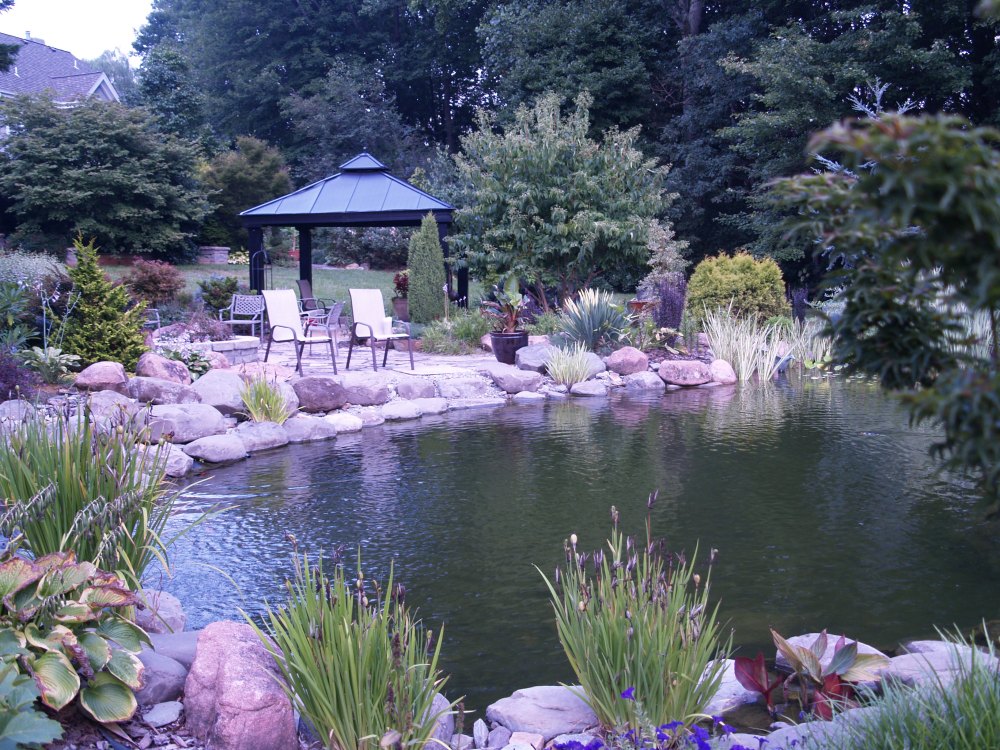Every garden should have a pond! I have five, six if the wet weather, dirt bottom pond is included, and nothing in the garden, not the hellebores or irises, the mahonias or Japanese maples, provides greater enjoyment. Of course I started with one (as you most likely will), then on a whim added a second pond nearby, but hidden from the first by a large threadleaf maple, ferns, and tall nandinas.
As often happens, at least in this garden, inspiration triumphs over good sense, and a third pond with a long stream became essential. Then a fourth along the front entry walk, and the next year the large swimming pond was constructed, because what could be more delightful than swimming with the goldfish and koi (like swimming with the dolphins in your backyard, except you can’t grab a fin for them to drag you around the pond).
I expect that you will not be guided to such an extent by impulses, so you will begin with one pond, and thus there is every reason to get it right.
Where?
First, and foremost, your pond must be situated to enjoy it fully, preferably in full sun, but if you regularly lounge on a shady patio, that’s where is should be. Not nearby, right next to it. If you have a deck, build the pond as close as possible, so that you look over the edge and see water.
People often imagine the lovely view of their pond in a distant corner of the garden, but once they have it, they realize it should be closer. So, a chair is placed at pond’s edge, then a small table to set your book down while you’re admiring your fish, then a patio is built so the family can be together in the area they enjoy so much. Considerable effort and expense are avoided by building the pond nearest the area where the family spends their time outdoors.
How big?
Bigger than you expect. Despite warnings to the contrary, my first pond was too small, under seventy five square feet. The second was double this size, and the swimming pond is thirty five by forty feet. Somewhere in the middle is ideal, but one hundred twenty five to fifty square feet is about right.
Fish? And other critters?
Of course we cannot fully enjoy the pond without fish. Goldfish will do, even the cheapest ones sold as feed for larger fish will quickly grow, and many are better than a few. Koi are considerably more expensive, but can grow quite large and live many years. I purchased the smallest, cheapest I could find, and they have grown quickly and spawned plenty of babies that cost nothing. After a few years you’ll have sufficient numbers to give some to the neighbors.
Other critters, frogs, toads, turtles, and dragonflies will arrive without invitation, and cost you nothing.
Plants?
Plants are a must to naturalize the edges of the pond, and in the water. Aquatic plants help to keep the pond’s water clear, provide cover for fish from predators, and many are quite beautiful and require a minimum of care. A word of caution, a few aquatics grow very aggressively, demanding frequent pruning, and others are considered invasive to natural waterways.
At the pond’s edge we want plants to blur the edges that show that your pond is a manmade creation, to flop over the boulders and river gravel. These low growing shrubs and perennials should be planted as a part of the pond’s budget and not as an afterthought.
How to keep it clean?
If constructed properly, the pond is less maintenance than the lawn or garden it replaces. With five ponds my yearly maintenance is only an hour or two per month, and many months require none at all. There are differing ways to reach this low maintenance goal, but the easiest are to build with a pump to recirculate and aerate the pond’s water and a filtration system to prevent algae and green, murky water. Filtration can be as simple as a pond skimmer and rock and gravel to line the inside of the pond, or UV lights and sand or bubble bead filters. A clear water pond can be achieved completely without chemicals and little labor.
Can I build a pond myself?
Ponds need not be complicated to be enjoyable, and many people can construct them on their own. However, the labor can be back breaking, and the liner and stone are bulky and heavy. A professional pond builder will design and build a pond that you can enjoy for many years without spending all your free time maintaining it.
Of course, chapters can be written on each of these topics, and many books are available to provide more in depth information. If you have specific questions about ponds I would be happy to address any that I have skipped over.